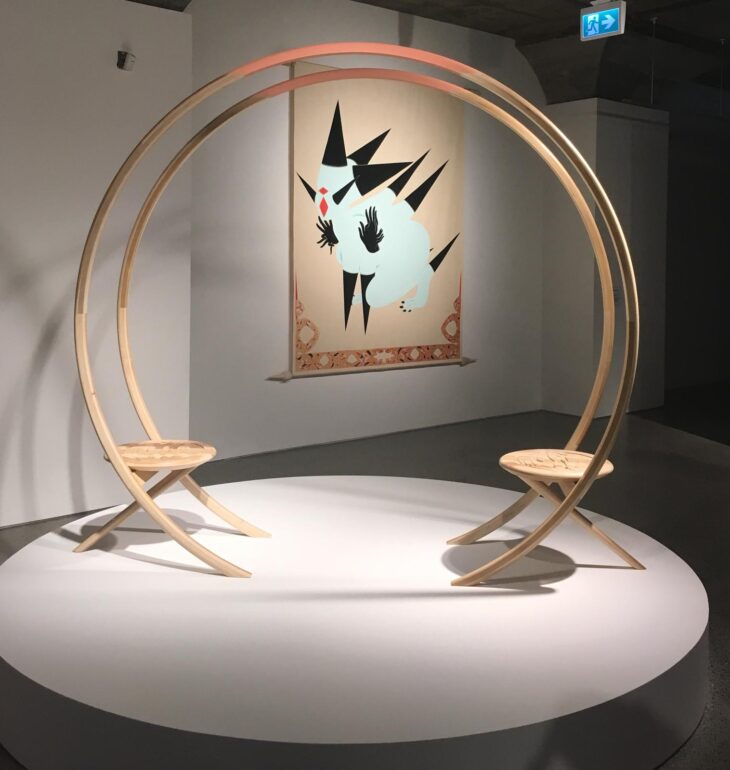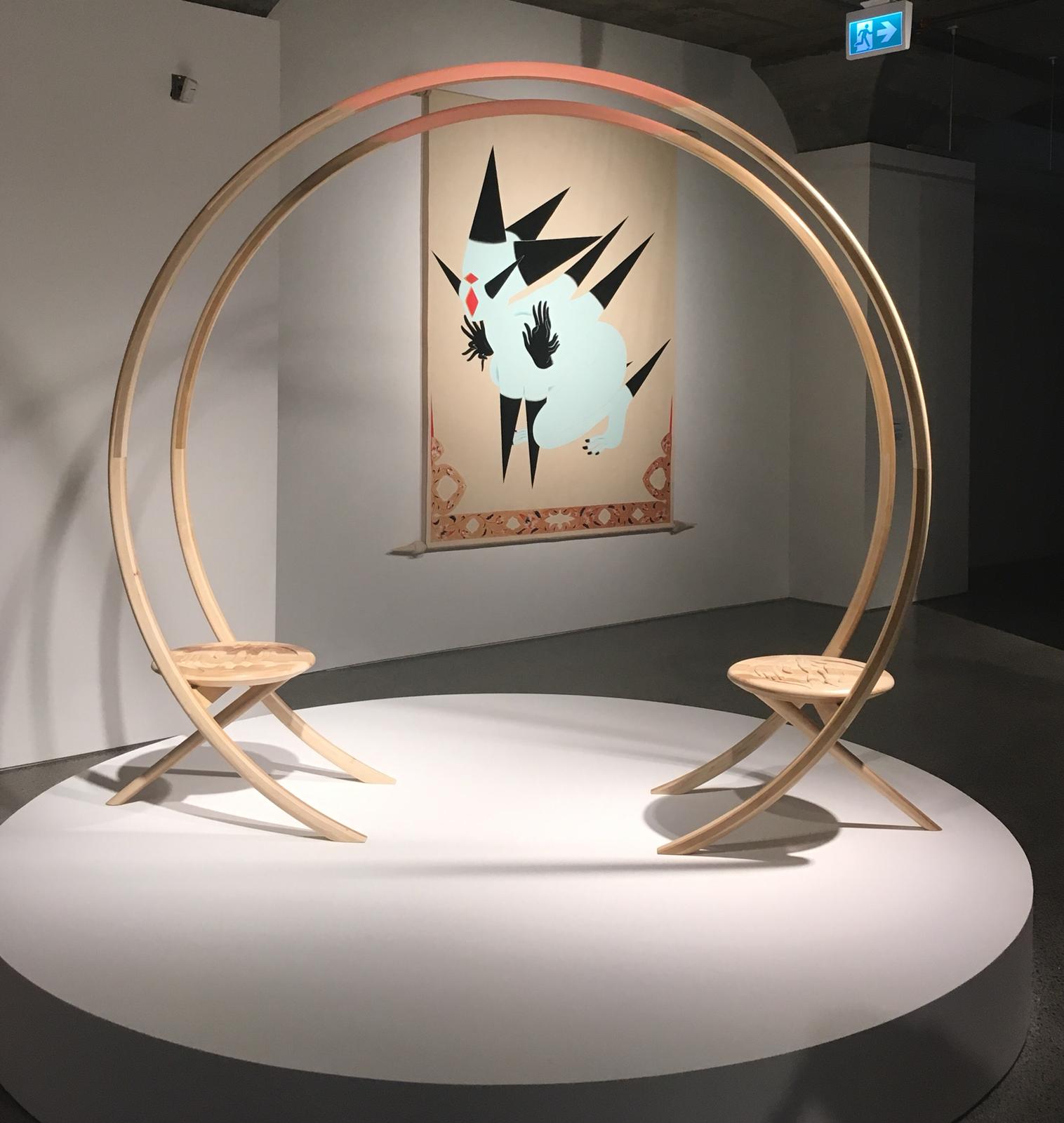
M Aranha
This Thursday, the Museum of Contemporary Art Toronto Canada will be giving members a behind the scenes look at the making of an artwork.
They will have the opportunity to meet with artists Rajni Perera and Yorgo Liapis, collaborators on the wood installation, ‘Talisman,’ currently on display at the gallery.
“So we’ll start off at the MOCA, talk about the concept of the piece. Then we’re going to walk over to my woodshop right around the corner, show members all the machines and talk about how we built it,” said Liapis.
According to the artists, ‘Talisman’ is a speculative artwork that is meant to evoke the rebalancing of energies—a space between binary identities and viewpoints. It also references a destructive conflict between the ancient Egyptian cities Thebes and Amarna.
A talisman is an object, typically an inscribed ring or stone, that is thought to have magic powers and to bring good luck.
“It’s made of two eight-foot diameter wooden circles that were lamination bent. That means a bunch of thin strips of wood glued together on a form. Once the form is dry they hold the shape of the curve. The two seats were hand-carved. It’s actually a non-functional double throne,” said Liapis.
The sculpture is part of MOCA’s inaugural exhibition ‘Believe’, which features art by 16 Canadian and international artists. The meet and greet is an example of the gallery’s stated commitment to being “the people’s gallery” since it reopened in the Junction Triangle neighbourhood in September, although the event will only be accessible to gallery members.
MOCA had to leave its former location on Queen Street W. three years ago to make room for condo development and did not have a new space until this fall. Its new home is the iconic heritage building on 158 Sterling road near Landsdowne Ave. and Bloor St. The building was once an aluminum factory and according to Liapis, was was later used by graffiti artists and ravers for some time.
The gallery is now on five floors including two main exhibition floors, smaller program spaces, and studios.
Liapis says that the neighbourhood is changing but that MOCA is seen by many of the area’s artists as a welcome addition.
“It’s getting gentrified but I’m happy that a gallery’s moved in because we were going to get kicked out the area anyway. It was changing before the MOCA came in so at least it adds something good here instead of another condo building,” said Liapis.
“This happens to artists in every city. Unless you can afford to own a building, you can’t complain about it, you just have to keep moving and keep making work. That’s just the way it is.”

